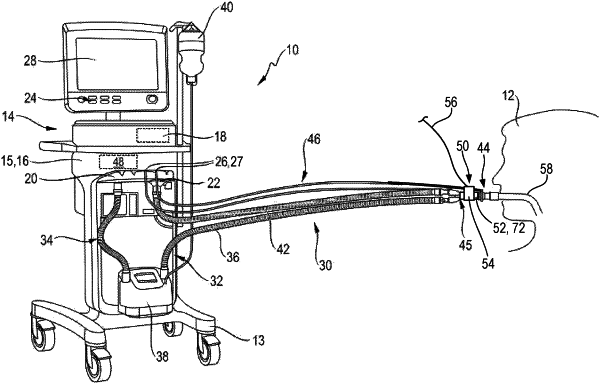| CPC G01N 21/3504 (2013.01) [G01J 5/0014 (2013.01); G01J 5/0802 (2022.01); G01N 21/77 (2013.01)] | 12 Claims |

|
1. A reaction subassembly, comprising a housing and a layered component arrangement for temperature-compensated optical detection of an oxygen content of a fluid, which is provided in the housing, said layered component arrangement comprising a luminophore-containing reaction laminate having a luminophore that is excitable by irradiation with a first electromagnetic radiation of a first wavelength, to emit a second electromagnetic radiation of a second wavelength different than the first wavelength, the excited emission behavior of the luminophore being dependent on an oxygen partial pressure in a fluid contacting the luminophore, and a temperature-detection laminate emitting an infrared radiation, wherein the reaction laminate and the temperature-detection laminate are embodied separately from one another; the housing comprising:
an opening through which a fluid is introducible into the housing;
a reaction window through which the reaction laminate is reachable by the first electromagnetic radiation and which is penetrable by the second electromagnetic radiation; and
a temperature-sensing window, arranged physically remotely from the reaction window, which is penetrable by the infrared radiation emitted from the temperature-detection laminate.
|